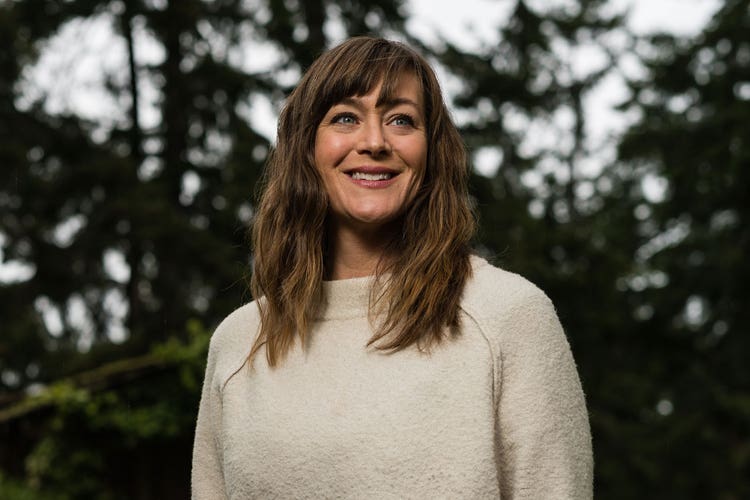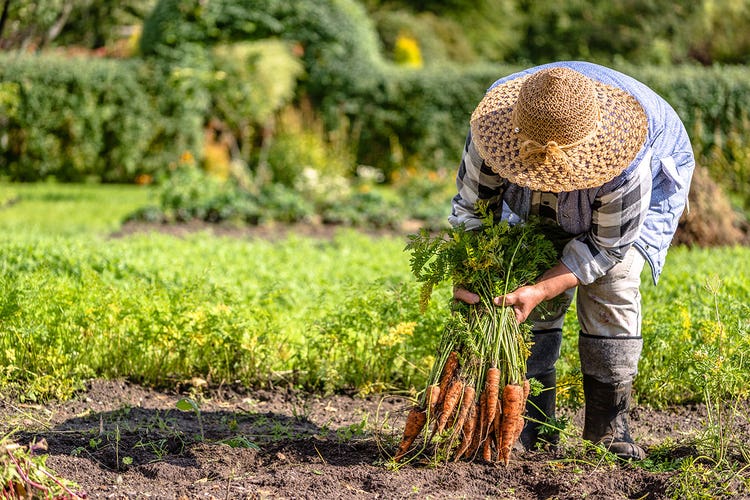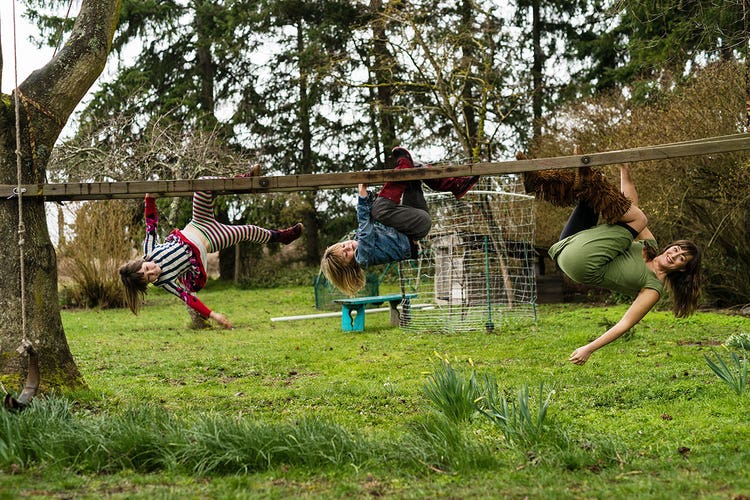Better Movement Nutrition and Less Movement as Medicine, With Katy Bowman

Whether it’s nutrients or movement, we’re obsessed with the minimum dosage, and Katy Bowman understands why. The biomechanist, founder of Nutritious Movement, creator of programs to restore comfortable daily movement, and author of eight books translated into multiple languages laughs when she says, “One of our basic biological laws is the law of conservation. I think that it is actually the natural expression of our human nature, to do as little as possible to get a task done.”
As humans have outsourced the movement that’s been a natural part of life for eons, we’ve had to come up with a replacement for this necessary phenomenon, she notes, and observes that we’ve introduced what we call “exercise” as a way to get the movement that our bodies are still designed to require—especially now that we drive to the store instead of planting, tending and harvesting our carrots or walking to get them from a neighbor or the farmers market. Bowman explains in her books Move Your DNA (expanded edition, Propriometrics Press, 2017) and Movement Matters (Propriometrics Press, 2016) that consequently, we think of movement only in terms of our workout—and not in terms of all the twisting, lifting, bending, pushing and pulling we’ve relegated to machines or to other people.
Without much natural movement left in our lives, we’re forced to focus on exercise and how much or how little of it we need—and what kind we should do—to fix the ills that come in the absence of movement. That’s not to mention the rise of diet-triggered inflammation that leads to chronic disease.
Movement nutrition

Bowman notes that we have separated food and movement and see them as equal and opposite forces: We eat to fuel our exercise, and we exercise to burn off what we’ve eaten (especially if we’ve eaten too much). She recalls hosting a prenatal workshop and hearing how many women justified not exercising during pregnancy because they didn’t have weight issues. “They thought they needed to be a certain body weight or size, not that they needed to move a certain amount,” she says.
“The need for movement is its own thing,” Bowman says. She also notes that movement determines where and how our bodies will use the dietary nutrients we consume. “The mechanical nutrients—the way you move—informs which parts of your body get which nutrients,” she explains. “There’s more to shape than muscle and fat composition. There’s more to movement than exercise. There’s just so much more to the nuance of the ways our bodies work and the way that they work well.”
Bowman proposes an easy change to reframe our thinking and expand our ideas about movement. “If you think of the bends and moves of your body as something that ends up affecting your cells just as dietary nutrients do, then you can think of movement the same way as nutrition,” she says. We can ask ourselves not only whether we ate well but also how we moved.
Movement as a nutrient vs. movement as medicine
Bowman emphasizes that movement is more like a nutrient, not medicine prescribed to cure an illness or something that’s wrong. It’s something we always need, and when we don’t get enough of it, she says, we suffer from a deficiency—something is missing. Medicine, on the other hand, is what we take when we’re sick; it’s more like a temporary addition and thinking of exercise as medicine makes it easy to discontinue once we’re “well” or achieve the result we want. “Thinking of movement as nutrition helps us realized that our need for movement is fundamental to being well, and it’s ongoing,” Bowman says.
What’s more, each of us has unique movement needs, just like we have unique nutritional needs. Like nutrients, there are movement capabilities we all need, but one person might be deficient in one, while the next person is not. That seven-minute workout might hold the key nutrient for one person while being an excessive dose or lacking in some way for someone else.
And just as our dietary needs change with life circumstances from aging to our environment, so do our movement nutrition needs. Bowman says, “The idea isn’t to find the ultimate seven- or 12-minute movement to last you for the rest of your life but to find this month’s approach,” she says.
To Bowman, small changes will add up. “Next month, it’s going to be different because you’re going to be moving in the context of your new shape, your home or relationship structure that’s used to you moving those 12 minutes,” which will adjust, again, she says.

Nutrition for humankind

Bowman says the absence of lots of day-to-day movement is one of the reasons we’re challenged to connect with our families, our friends and beyond: “When you don’t walk around in the same space as your neighbors, it’s hard to know who everyone is in our neighborhood, let alone in the greater community political spaces that we all share. … Our lack of movement is actually creating this cascade of effects all about the planet.”
But when we start adding exercise and non-exercise movement, Bowman says, “we’re meeting more than our need for movement; we’re also meeting other needs we didn’t know could be movement-related.” Bowman believes that human movement is a part of our ecosystem and a very powerful tool for healing our bodies, our families, our communities, “and the body that we all dwell upon, the Earth.”
Check out Katy Bowman’s simple tips for life “stacking,” and for adding more vitamin movement in your kitchen, your office and your life.
Video credit: Mark Kuroda, kurodastudios.com
Photo credit:alicja neumiler, Adobe Stock; Ivan-balvan, Thinkstock; bernardbodo, Adobe Stock
Hair and make-up: Katie Nash, katienashbeauty.com
